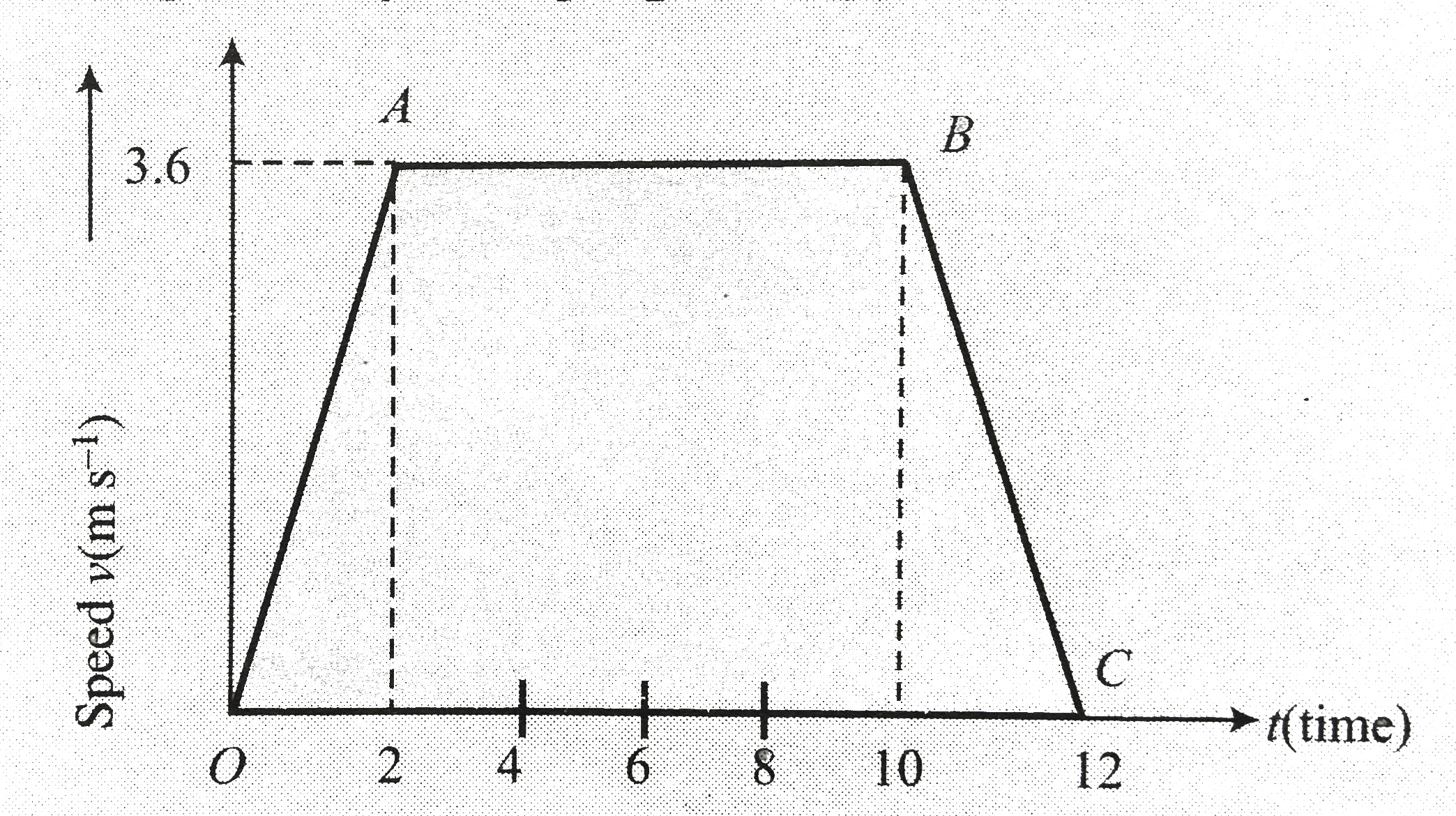What is the average velocity of the object during its course of motion, if its initial and final positions are same?
The correct Answer is:Zero.
To find the average velocity of an object when its initial and final positions are the same, we can follow these steps:
1. Identify Initial and Final Positions:
- Let the initial position of the object be denoted as xi.
- Let the final position of the object be denoted as xf.
- According to the problem, xi=xf.
2. Calculate Net Displacement:
- The net displacement (Δx) is calculated using the formula:
Δx=xf−xi
- Since xi=xf, we have:
Δx=xf−xf=0
3. Understand the Formula for Average Velocity:
- The formula for average velocity (vavg) is given by:
vavg=Net DisplacementTotal Time
- Here, we denote the total time of motion as t.
4. Substitute Values into the Average Velocity Formula:
- Since the net displacement is zero:
vavg=0t
- Regardless of the value of t (as long as t is not zero), the average velocity will be:
vavg=0
5. Conclusion:
- Therefore, the average velocity of the object during its course of motion, when its initial and final positions are the same, is:
vavg=0
Final Answer:
The average velocity of the object is 0.
- Let the initial position of the object be denoted as xi.
- Let the final position of the object be denoted as xf.
- According to the problem, xi=xf.
- The net displacement (Δx) is calculated using the formula:
Δx=xf−xi
- Since xi=xf, we have:
Δx=xf−xf=0
- The formula for average velocity (vavg) is given by:
vavg=Net DisplacementTotal Time
- Here, we denote the total time of motion as t.
- Since the net displacement is zero:
vavg=0t
- Regardless of the value of t (as long as t is not zero), the average velocity will be:
vavg=0
- Therefore, the average velocity of the object during its course of motion, when its initial and final positions are the same, is:
vavg=0
The average velocity of the object is 0.
Topper's Solved these Questions
- MOTION IN STRAIGHT LINEBOOK - AAKASH INSTITUTE ENGLISHCHAPTER - MOTION IN STRAIGHT LINEEXERCISE - Assignment (SECTION - A)
50 Videos
- MOTION IN STRAIGHT LINEBOOK - AAKASH INSTITUTE ENGLISHCHAPTER - MOTION IN STRAIGHT LINEEXERCISE - Assignment (SECTION - B)
19 Videos
- MOTION IN STRAIGHT LINEBOOK - AAKASH INSTITUTE ENGLISHCHAPTER - MOTION IN STRAIGHT LINEEXERCISE - Assignment (SECTION - J)
2 Videos
- MOTION IN A STRAIGHT LINEBOOK - AAKASH INSTITUTE ENGLISHCHAPTER - MOTION IN A STRAIGHT LINEEXERCISE - ASSIGNMENT (SECTION - D)
15 Videos
- MOVING CHARGE AND MAGNESIUMBOOK - AAKASH INSTITUTE ENGLISHCHAPTER - MOVING CHARGE AND MAGNESIUMEXERCISE - SECTION D
16 Videos
Similar Questions
What is the average velocity of a body in uniform circular motion ?
View SolutionThe energy that an object has due to its state of motion
View SolutionA lift is going up. The total mass of the lift and the passengers is 1500kg. The variation in the speed of the lift is given by the graph.

(a) What will be the tension in the rope pulling the lift at time t equal to
(i) 1a, (ii) 6s, (iii)11s ?
(b) What will be the average velocity and the average acceleration during the course of the entire motion?
View SolutionAssertion:− The displacement always equals the product of the average velocity and the time interval.
Reason:− The average velocity always equals the mean value of the initial and final velocities.
View SolutionA 2kg object is sliding along the frictionless floor with initial velocity (10m/s)ˆi (a) Describe the motion of the object relation to car (b) when does the object reach its original position relative to the box car.
View SolutionIf the frequency of an object in unifrom circular motion is doubled, its acceleration becomes
View SolutionA ball is thrown from ground at an angle θ with horizontal and with an initial speed u0 . For the resulting projectile motion, the magnitude of average velocity of the ball up to the point when it hits the ground for the first time is V1 . After hitting the ground, the ball rebounds at the same angle θ but with a reduced speed of u0 / α . Its motion continues for a long time as shown in figure. If the magnitude of average velocity of the ball for entire duration of motion is 0.8 V1 ,. the value of α is ________.

View SolutionA particle execute SHM and its position varies with time as x=Asinωt. Its average speed during its motion from mean position to mid-point of mean and extreme position is
View SolutionA player throwsa a ball upwards with an initial speed of 29.4ms−1.
(i) What is the direction of acceleration during the upwared motion of the ball?
(ii) What are the velocity and acceleration of the ball at the highest point of its motion?
(iii) Choose the x=0 and t=0 to be the location and time of the ball at its highest point, vertically downward direction to be the positive direction of X-axis, and give the signs of positive, velocity and acceleration of the ball during its upward, and downward motion.
(iv) To what height does the ball rise and after how long does the ball return to the player's hand?( Take g=9.8ms−2, and neglect air resistance).
View SolutionSay Yes or No:
a. Can an object moving towards north have acceleration towards south?
b. Can an object reverse the direction of its motion even thouth it has reverse the direcleration?
C. Can an object reverse the derction of its acceleration even though it continues to move in the same dirction?
d. Average speed is the magnitude of average velocity
e. At any instant of time. the directions of change in velocity and acceleration are differnt.
View Solution
